Occupational safety training for Basketball Manufacturing
99,000 ₫
Note: The above price is calculated per person and may vary depending on the number of trainees participating in the course and market fluctuations. For more accurate pricing support, please refer to the price list or contact our consultants directly.
Occupational safety is an important issue in basketball manufacturing plants and needs to be addressed promptly to ensure the health and safety of workers and enhance the reputation of businesses. The Occupational Safety Training course is one of the most effective solutions to raise awareness of accident prevention for workers involved in basketball manufacturing.
Table of Contents
Toggle1. Overview of Basketball
a. What is a Basketball?
A basketball is a type of ball used in the sport of basketball. It has several key characteristics as follows:
- Size and Weight: A basketball typically has a diameter of about 24 cm to 25 cm and weighs between 600 to 650 grams. The size and weight may vary depending on the level of play (e.g., basketballs for children or women may be slightly smaller and lighter).
- Material: Basketballs are usually made from synthetic leather or rubber. Synthetic leather offers better playing feel and higher durability, while rubber basketballs can withstand various weather conditions better.
- Surface: A basketball has a textured surface with prominent grooves that help players grip and control the ball easily. These grooves enhance ball handling and control when dribbling, shooting, or passing.
- Color: Traditional basketballs are typically orange with prominent black grooves. This color makes the ball easily recognizable on the court.
- Design: A basketball has a spherical structure and usually consists of three layers. The outer layer is the protective cover, the middle layer is padding to maintain shape and bounce, and the inner layer is the bladder that holds air to ensure proper bounce and shape.
Basketballs are designed for consistent bounce and ease of use during games or practice. The ball’s characteristics can significantly affect gameplay and player performance.

b. Machinery Used in Basketball Production
- Rubber Mixing Machine:
- Function: Mixes rubber with other components to create a uniform rubber compound.
- Application: Used to produce the inner rubber layer of the basketball, ensuring elasticity and durability.
- Molding Machine:
- Function: Presses the rubber compound into molds to form the shape of the ball.
- Application: Ensures the ball has an accurate and uniform spherical shape.
- Outer Shell Formation Machine:
- Function: Creates the outer shell of the ball from synthetic leather or rubber.
- Application: Ensures the outer shell has high durability and good grip.
- Cutting and Processing Machine:
- Function: Cuts and processes the outer shell according to required size and shape.
- Application: Produces shell panels with high precision before assembly.
- Assembly Machine:
- Function: Assembles all parts of the basketball, including the outer shell and the inner rubber layer.
- Application: Ensures all components of the ball are accurately and consistently joined.
- Inflation Machine:
- Function: Pumps air into the basketball to maintain its shape and bounce.
- Application: Ensures the ball has the correct pressure and bounce.
- Quality Testing Machine:
- Function: Tests the ball’s attributes such as bounce, grip, and durability.
- Application: Ensures the ball meets quality standards before going to market.
- Printing and Logo Application Machine:
- Function: Prints logos, brand names, and other information on the ball.
- Application: Produces branded basketballs with identification details.

c. Famous Basketball Brands
There are many well-known brands in the basketball manufacturing industry, each with its own features and strengths. Below are some of the top brands:
- Spalding:
- About: One of the oldest brands in basketball manufacturing, Spalding is known for its product quality and durability.
- Notable Products: Spalding NBA Official Game Ball, Spalding TF-1000.
- Wilson:
- About: Wilson is a well-known brand for high-quality sports products, including basketballs. Wilson is the official supplier for the NBA and NCAA.
- Notable Products: Wilson Evolution, Wilson NCAA Official Ball.
- Molten:
- About: Molten is famous for its distinctive basketball design and high quality. It supplies basketballs for many international and professional tournaments.
- Notable Products: Molten BGG7X, Molten GG7X.
- Nike:
- About: Nike, known for its wide range of sports products, also manufactures basketballs using advanced technology and modern designs.
- Notable Products: Nike Elite Series, Nike Air Zoom.
- Under Armour:
- About: Under Armour offers basketballs with innovative design and advanced technology, suitable for both professional and amateur players.
- Notable Products: Under Armour 495, Under Armour Playground.
- Adidas:
- About: Adidas, known for a wide range of sports products, also produces basketballs with good quality and appealing designs.
- Notable Products: Adidas Performance Basketball.
- Bison:
- About: Bison specializes in providing basketballs for schools and sports organizations, offering durable quality at an affordable price.
- Notable Products: Bison Basketballs.
- Champion Sports:
- About: Champion Sports provides basketballs for educational and recreational purposes, with consistent quality at reasonable prices.
- Notable Products: Champion Sports Rubber Basketball.

d. Specific Jobs in a Basketball Manufacturing Plant
Group 1
- CEO, Deputy CEO, department heads in a basketball manufacturing plant.
Group 2
- Safety Officers: Manage workplace safety in the factory, design safety procedures, monitor, and enforce compliance with safe work practices.
Group 3
- Rubber Mixing Machine Operators: Operate mixing machines to prepare rubber or synthetic leather compounds for the ball’s outer shell.
- Molding Machine Operators: Mold the compound into panels forming the basketball’s outer shell.
- Shell Cutting Operators: Cut and process the shell into smaller panels to required specifications.
- Ball Assembly Workers: Assemble all ball components, including the outer shell and inner rubber bladder.
- Inflation Machine Operators: Inflate the ball to maintain proper shape and bounce.
- Printing Machine Operators: Print logos, brand names, and other information onto the ball.
- Packing Workers: Package basketballs into boxes and prepare them for shipping.
Group 4
- Office work, service, sales, marketing.
- Production management, quality control, human resources management, materials management, financial and accounting management.
- Research and development of new products, product packaging design.
2. Overview of Basketball Manufacturing Occupational Safety Training
Within the scope of this article, we focus on issues related to Group 3 because Group 3 is directly involved in the production process and faces the highest occupational safety risks. Refer to other groups here.
a. What is Group 3 Occupational Safety Training?
- Group 3 occupational safety training consists of lessons that equip workers with awareness on how to prevent occupational accidents.
- The occupational safety training course helps workers identify and avoid hazards, thereby reducing the risk of workplace accidents during work.
REGISTER FOR OCCUPATIONAL SAFETY TRAINING SERVICE
b. Training Duration
Initial safety training duration
- Total training time is at least 24 hours, including the examination.
- 8 hours of theoretical study on the occupational safety and hygiene policy and legal system
- 8 hours of theoretical study on basic occupational safety and hygiene knowledge
- 4 hours of theoretical study on specialized training content
- 2 hours of practical training on specialized training content
- 2 hours of theoretical testing at the end of the training course
The safety training center will allocate training hours into multiple sessions depending on the scheduling arrangements for employees. Typically, there will be 6 training sessions held over 3 days, provided the manufacturing company can arrange continuous training time.
Periodic safety training duration
- Before the occupational safety card expires, if workers wish to renew it, they must complete periodic occupational safety training, with a periodic training time of at least 50% of the initial training time.
Explanation: The total periodic occupational safety training time is at least 12 hours, including the examination. After completing the periodic training and passing the test, workers will have their occupational safety card renewed or extended.
c. Training Content
| No. | TRAINING CONTENT | TRAINING DURATION (HOURS) | |||
| Total | Including | ||||
| Theory | Practice | Test | |||
| I | Occupational safety and hygiene policy and legal system | 8 | 8 | 0 | 0 |
| 1 | Overview of the system of legal documents on occupational safety and hygiene. | 6 | 6 | ||
| 2 | System of standards and technical regulations on occupational safety and hygiene. | 1 | 1 | ||
| 3 | Specific regulations by state management agencies on occupational safety and hygiene when constructing new, expanding, or renovating facilities for the production, use, storage, preservation, and inspection of machinery, equipment, materials, and substances subject to strict occupational safety and hygiene requirements. | 1 | 1 | ||
| II | Basic knowledge of occupational safety and hygiene | 8 | 8 | 0 | 0 |
| 1 | Basic knowledge of hazardous and harmful factors in the workplace. | 4 | 4 | ||
| 2 | Methods to improve working conditions. | 1 | 1 | ||
| 3 | Safety culture in production and business. | 1 | 1 | ||
| 4 | Rights and obligations of employers and employees; occupational safety and hygiene policies and regimes for employees; functions and duties of the occupational safety and hygiene network. | 1 | 1 | ||
| 5 | Occupational safety and hygiene regulations, signs, safety instructions, and the use of safety equipment and personal protective equipment; skills for first aid in occupational accidents and prevention of occupational diseases. | 1 | 1 | ||
| III | Specialized training content | 6 | 4 | 2 | 0 |
| Comprehensive knowledge of machinery, equipment, and substances generating hazardous and harmful factors; risk analysis, assessment, and management in occupational safety and hygiene; safe working procedures with machinery, equipment, and substances subject to strict safety and hygiene requirements. | 6 | 4 | 2 | ||
| IV | Final test on occupational safety training content | 2 | 2 | 0 | 0 |
| Total | 24 | 22 | 2 | ||
See more training content for the 6 groups
d. Occupational Safety Card
After completing the occupational safety training course and passing the test, workers will be issued an occupational safety card (commonly referred to as a Group 3 occupational safety certificate).
The Group 3 safety card clearly displays information such as full name, date of birth, job title, and specific working environment. It also includes training duration, an official stamp, and a signature confirming course completion.
According to the regulations stated in Clause 2 of Article 24 of Decree 44/2016/NĐ-CP, there are 2 cases:
- If the employer and employee have a labor contract, the employer must sign, stamp, and seal the safety card for the Group 3 trained worker after completing training from an occupational safety training unit and passing the test.
- If the worker is a freelancer or seasonal worker with no labor contract, the training unit must sign, stamp, and seal the safety card after the worker completes training and passes the test.

3. Identifying Hazards Affecting Workers in Basketball Manufacturing
Mechanical Hazards
- Risk: Machine-related accidents such as cutting, pressing, or assembling can cause serious injuries.
- Identification: Risks may come from contact with moving parts of machinery or sharp equipment.
Chemical Hazards
- Risk: Exposure to chemicals used in mixing and processing rubber, such as solvents or cleaning agents, can cause skin, respiratory, or poisoning issues.
- Identification: Symptoms include skin irritation, difficulty breathing, or signs of poisoning.
Thermal Hazards
- Risk: Pressing or mixing machines may produce high heat, posing burn or heat shock risks.
- Identification: Feeling of heat, skin redness, or signs of heat shock.
Noise Hazards
- Risk: Loud machinery can cause hearing loss or other ear health issues.
- Identification: Tinnitus (ringing in the ears), difficulty hearing.
Stress Hazards
- Risk: Jobs requiring high concentration or working under stressful conditions may lead to fatigue and psychological stress.
- Identification: Feeling tired, mental stress, or reduced work performance.
Electrical Hazards
- Risk: Using electrical machinery may lead to electric shock or fire/explosion hazards.
- Identification: Electric shock or signs of faulty electrical equipment.
Property Hazards
- Risk: Accidents from falling or colliding materials can cause injury.
- Identification: Falling or colliding materials may result in bruises or fractures.

4. Safety Measures in Basketball Manufacturing
Training and Education
- Employee training: Provide comprehensive training on production processes, machinery safety, and use of personal protective equipment. Ensure employees fully understand hazards and how to prevent them.
- Chemical safety training: Train employees on safe handling and storage of chemicals, including the use of personal protective equipment when in contact with chemicals.
Personal Protection
- Use of protective equipment: Provide and require employees to use personal protective equipment such as gloves, safety glasses, masks, and hearing protection. Ensure that PPE matches the specific hazards in the factory.
- Hearing protection: In high-noise areas, require employees to use earplugs or helmets with noise reduction functions.
Machinery Maintenance and Inspection
- Regular maintenance: Conduct periodic maintenance and inspection of machinery to ensure safe and efficient operation. Ensure that machine guarding devices are installed and functional.
- Safety checks: Perform daily safety checks before starting shifts to detect and address potential equipment and machinery issues.
Chemical and Liquid Management
- Chemical storage: Store chemicals and liquids in designated areas with warning signs, ensuring containers are properly sealed.
- Handling and cleaning: Ensure chemical handling and cleaning procedures are performed correctly and in compliance with safety regulations.
Electrical Safety
- Electrical equipment inspection: Conduct regular inspections of electrical systems and equipment to detect potential issues. Ensure proper installation and adequate protective devices for electrical systems.
- Electrical safety: Train employees on electrical safety rules and ensure all electrical equipment is used properly.
Mechanical Hazard Control
- Machine guarding: Install guards on machinery to prevent contact with moving or dangerous parts.
- Operating instructions: Provide detailed instructions on safe operation of machinery and equipment, including emergency procedures in case of incidents.
Temperature Management
- Temperature control: Ensure high-temperature machinery has effective cooling systems to prevent overheating.
- Comfortable work environment: Ensure work areas are well-ventilated and provide drinking water to keep employees comfortable in high-temperature environments.
Stress Risk Prevention
- Positive work environment: Encourage employees to take breaks and relax to reduce mental stress. Provide recreational activities and mental support if needed.
- Employee health monitoring: Monitor employees’ health and mental state to detect and address issues early.
Asset and Material Management
- Material organization: Ensure materials and products are neatly and safely arranged to prevent accidents from falling or colliding materials.
- Use of lifting equipment: Use lifting equipment properly to minimize injury risk when handling heavy materials.
Process and Safety Regulation Management
- Safety policies: Develop and implement clear and detailed safety policies for all production processes. Ensure employees understand and comply with these policies.
- Monitoring and evaluation: Conduct regular safety inspections and evaluations to identify weaknesses and improve safety procedures.
5. Benefits of Occupational Safety Training for Basketball Manufacturing
An Toan Nam Viet provides your company with the following valuable benefits after completing occupational safety training courses as regulated in Decree 44/2016/ND-CP on occupational safety and hygiene for companies, factories, and enterprises.
- Workers can recognize potential occupational accident hazards and therefore take preventive measures to avoid accidents.
- Your company can establish risk prevention measures in production, operation, and maintenance processes.
- Reduce costs associated with occupational safety incidents.
- Uninterrupted production will help increase labor productivity and product quality.
- Comply with occupational safety laws and avoid legal risks.
- Create credibility and professionalism in every aspect, thus elevating your company’s brand.
Nam Viet’s training courses are solutions to prevent and counter external factors affecting individuals so they can avoid dangers that may lead to injury or, in more serious cases, death.
REGISTER FOR OCCUPATIONAL SAFETY TRAINING SERVICE
6. Customer Feedback After Completing Occupational Safety Training for Basketball Manufacturing
An Toan Nam Viet has many years of experience accompanying numerous businesses throughout Vietnam in general and the southern provinces in particular. That responsibility is extremely precious to Nam Viet, which is why Nam Viet’s Occupational Safety Training work has been increasingly professionalized. The motivation for An Toan Nam Viet’s growth to date comes from both positive feedback and suggestions from businesses. Below are comments from partners we have served.
Bac Nam E&C Investment and Construction Joint Stock Company
“The first time using An Toan Nam Viet’s service I was surprised by the 24/7 enthusiastic support from the consulting team. Class organization was quick and convenient for our company — thank you very much for Nam Viet’s service!”
Hoa Dat Construction and Trading Joint Stock Company
“Nam Viet’s service greatly helped us simplify occupational safety and complete safety documentation for our work processes. The consulting team was enthusiastic and timely in answering our questions. 5 stars for Nam Viet.”
See more customer interview sessions after using the service of An Toan Nam Viet
7. An Toan Nam Viet’s Capacity in Occupational Safety Training
An Toan Nam Viet is a reputable and high-quality occupational safety training center in Vietnam today. Our occupational safety training sessions are held continuously at production workshops, factories, or construction sites across the country (all 63 provinces and cities in Vietnam).
REGISTER FOR OCCUPATIONAL SAFETY TRAINING SERVICE
Occupational safety training license
- An Toan Nam Viet has been inspected and issued a certificate of eligibility for occupational safety and hygiene training by the Department of Safety under the Ministry of Labour – Invalids and Social Affairs. This further solidifies our capacity to provide occupational safety training.

Materials and lectures
- Before training materials are introduced into the occupational safety training courses, they are reviewed and vetted to ensure that lectures are accurate in content and effective in application.
- Our instructors’ teaching methods are standardized according to An Toan Nam Viet’s teaching standards — a methodology studied and consolidated by experts in occupational safety and hygiene training to deliver the highest knowledge retention for trainees.
Facilities
- Controlling classroom environment factors that affect training increases teaching efficiency and trainees’ knowledge retention.
- Our training facility support always provides spacious classrooms that meet standards for area, lighting, training equipment, etc.
8. A Nationwide Reputable and Quality Training Center
At An Toan Nam Viet, we always place our professional dedication to occupational safety training as the top priority. For us, imparting knowledge that enables workers to protect themselves — giving them safe tools for earning a living — contributes to nation-building.
To ensure effective training, we prepare carefully and meticulously down to the smallest detail — from preparing teaching tools, equipment, and training devices to curricula, materials, sound, and lighting.
Our occupational safety instructors are experts with many years of experience in the field. Some even have research work on hazard identification across various occupations and methods for preventing them.
Instructors’ lectures are distilled from practical experience and presented in the most vivid and easily visualized way for workers. These factors help trainees feel comfortable during study and absorb our instruction well. Of course, the delivered knowledge always aligns closely with Decree 44/2016/ND-CP.
Thus, trainees learn many preventive measures against hazards and ways to protect themselves, and they can apply them suitably in real work situations.
Our training center is proud to be a reputable, professional provider of occupational safety training services with the following advantages:
- Competitive training costs while maintaining training quality.
- Flexible training schedules aligned with company production.
- Fast and legally compliant procedures for issuing training certificates.
- Instructors with many years of professional experience.
- Classrooms controlled for factors that enhance teaching efficiency and trainees’ knowledge retention.
- Lectures tailored to occupational safety work at enterprises.
- An Toan Nam Viet works diligently and professionally to support customers accurately and quickly.

9. Additional References for Occupational Safety Training Materials — Basketball Manufacturing
- Occupational safety materials for basketball manufacturing
- Occupational safety training materials package
- Occupational safety training test bank
- Occupational safety syllabus for basketball manufacturing (basketball)
- Multiple-choice test for occupational safety in basketball manufacturing
No comments yet

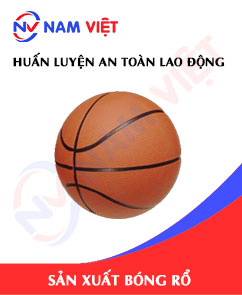





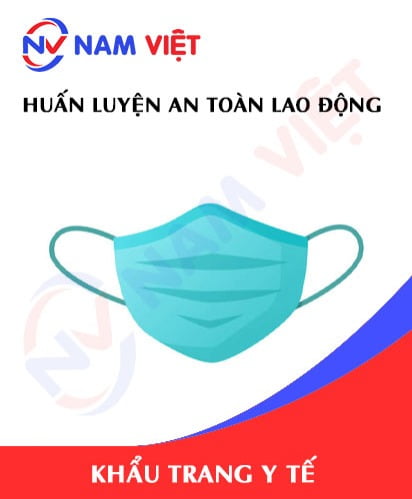
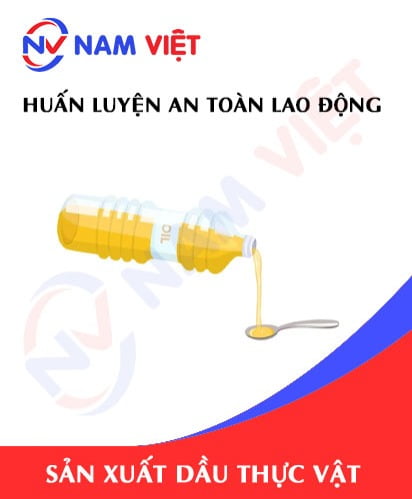


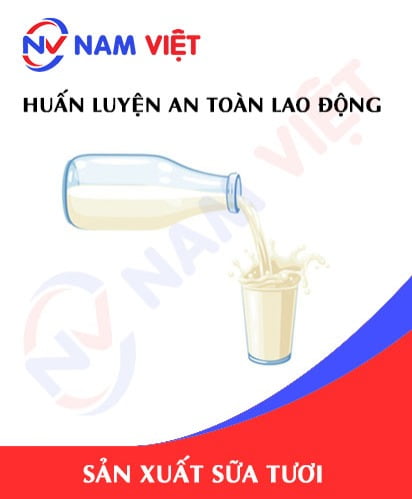
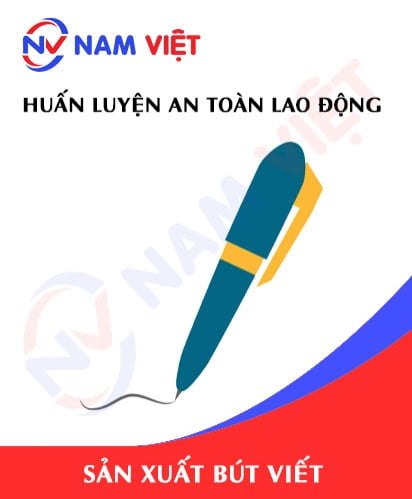
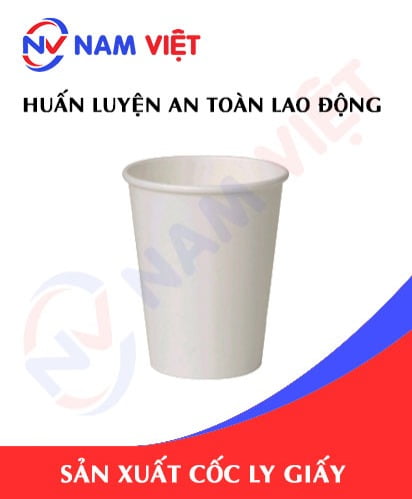

Review Occupational safety training for Basketball Manufacturing
There are no reviews yet.